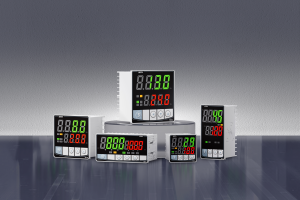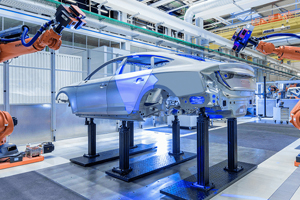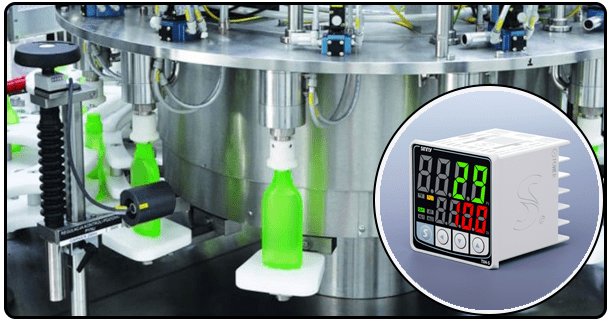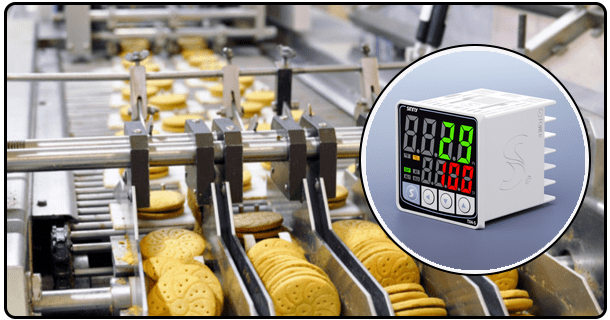Achieving precise thermal regulation with the 220V Digital Temperature Control Kit
1. The 220V Digital Temperature Control Kit: Product description
This controller's compatibility with 220V AC standard power supplies is a fundamental feature. It makes it ideal for many applications, especially in light industry or household power. Its accessibility increases its usefulness. This results in more consistent outcomes. The detailed description will help you understand the benefits and capabilities of this temperature control kit.
2. What it is: The PID Control System
Control proportional (P). The component responds to current errors - that is, the difference between setpoint temperature and actual measured temperatures. An increased error will result in an increase of the output adjustment. The proportional control is primarily concerned with the first response in order to get the temperature to be closer to its setpoint.
Integral Control (I): The component takes into account the cumulative sum of errors in time. Integral action corrects temperature errors that are consistent and slightly out of the target range. It prevents drift over time.
Control (D) Derivative: The component forecasts future errors by analyzing the rate at which the error is changing. This component dampens the response of the system, which prevents overshoots and oscillations. It contributes to smoother, more stable controls.
Digital controllers allow for accurate calculation and adjustments of all three elements. Users interact with the system via input buttons and a digital screen. The user sets the desired temperature, the setpoint. An internal controller algorithm takes care of the rest. It sends signals to connected heating and cooling elements (often through relays), to keep the temperature in a range defined by the user (setpoint plus hysteresis). The operational principles are explained in an accessible and clear manner for all users, regardless of their technical knowledge.
Energy Efficient: PID controls contribute to energy saving compared with simpler methods of control. The controller is therefore an eco-friendly and cost effective choice.
Application Versatility: The controller can be used with different heating elements, such as resistive coils and heating tapes. It is also compatible with cooling systems (such Peltier modules and fan-based system), depending on which kit you are using and the intended use.
Potential Remote Control Capabilities: Certain advanced models in this category could offer remote control or monitoring options. However, this will vary by product design.
The Digital PID temperature controller kit is a user-friendly and robust choice in demanding temperatures control situations.
5. Application: When Precise control is essential
Industrial processes: Used for manufacturing, drying and curing and other processes that require tight temperature controls to ensure product consistency and quality. Polymer processing, curing adhesives, and chemical reactions are examples.
Lab Environments: Important for incubators and drying ovens as well as water baths and other scientific equipment that requires stable temperature.
HVAC & Home Automation: Ideal for advanced climate control, intelligent heating, refrigerators, wine cellars, and greenhouse climate management, where more control than standard thermostats is required.
6. Understand the capabilities of technical specifications
Understanding the technical specs is crucial to selecting and implementing the Digital PID temperature controller Kit. The details of the kit define its compatibility and operational limitations:
Voltage of the Power Supply: Specifically designed for standard 220V AC household power or light industrial electricity. Make sure the power requirement of your kit matches what you have available.
Controlled Current/Voltage: Kits must be compatible to the voltage ratings and current ratings for the heating/cooling elements you wish to control. Verify the maximum load that the controller is capable of handling.
Range of temperatures: Determine what temperature range the sensor or controller is capable of accurately measuring and regulating. The range should cover all the requirements of your application.
Configure the output: Learn how to configure signals from the controller. Typically, these are relays with the ability to switch AC and DC loads. Be aware of the rating for each contact (e.g. 10A @240V AC).
Connectors Verify the connectors used for sensor and load connections.
Weight and Dimensions: The weight and dimensions are critical for planning the installation, particularly if DIN-rail mounting is needed or a specific enclosure must be integrated.
This information will enhance the expertise of the article and its usefulness to users who need to integrate the controller with a particular system.
7. Installing and Setting up Your Kit
Connecting the Sensor Place the sensor where it can accurately measure the room or medium temperature. The wiring diagram provided in the manual will show you how to connect the sensor to the terminals of the controller.
Connecting the Load: Disconnect safely the electricity to the cooling or heating element. Connect the power cables of the load to the output terminals on the controller (relays). Ensure correct wiring (Live, Neutral, etc.) Verify the type of load (AC/DC or resistive/inductive) is compatible.
Configuration and Power-Up: Connect power to the controller (make sure it meets the 220V AC requirements). Use the display or buttons to select the temperature and other parameters. If the manufacturer requires it, calibrate the sensor.
Operation Test: At first, closely monitor the system after it is powered up. Check that the temperature is read correctly by the controller and that heating or cooling elements are activated when setpoints are reached.
These steps will ensure a successful and safe installation.
8. For continued operation, the User Guide and Support is essential.
The Digital PID Controller Kit includes a comprehensive user guide that provides essential instructions for installation, operation and troubleshooting. The manual is usually included in the kit and should include:
Specifications are available.
Warnings about safety and precautions
Installation instructions step-by-step
Guide to the interface and its operation.
Parameter configuration details.
Common issues and their troubleshooting
Customer support goes beyond the manual. Manufacturers who are reputable offer assistance channels like:
Email support: for detailed questions and technical assistance.
Support by Phone: To get immediate assistance with any operational problems.
Online resources: such as FAQs or knowledge bases.
Support from experts ensures that users get the best out of their investment in temperature control.
9. Real-World Feedback and Reviews
The feedback of other users can provide valuable insight into the performance and reliability in real life for the Digital PID temperature controller Kit. Customer reviews and ratings are often available on reputable online retailer or manufacturer sites. You can find feedback on:
Stability and Accuracy: Does the user report accurate temperature control with minimal fluctuation?
User-Friendliness: Does the digital interface feel intuitive to you? Is the setup and programming simple?
Build quality and Durability: Is the controller robust in feel? Do the components last over time?
Control: Can it control the desired heating or cooling load successfully?
Is the value for money worth it?
On the manufacturer's website, you may also find testimonials or case studies from companies or individuals that have used the controller successfully in their applications. This real-world proof reinforces a product's abilities and increases trust.
10. Answers to Common Questions
The FAQ section clarifies and answers common questions about the Digital PID Temperature Controller kit. This helps users understand and reduces support workload.
Q: What exactly is PID control? A: PID stands for Proportional-Integral-Derivative. This is an advanced algorithm for controlling a variable in a process (like the temperature). It calculates how much output will be needed to maintain the desired set point by taking into account the present error, past errors and rate of error change.
Check compatibility of your heating/cooling elements.
Does the kit include a sensor or is it purchased separately? This depends on which kit you are using. In some kits, a sensor is included. Others may require that you purchase and install an additional sensor. Look at the description of the product.
Q. What safety features are there?A. Look for features such as over-temperature, under-temperature, or overload protection. Always use and install your equipment safely.
11. Customers' Protection: Warranty and Returns
You will feel more secure and protected if you understand these policies. For more information, visit the website of your retailer or manufacturer.
12. Contact information: Connecting to the provider
Finaly, it is important to have reliable contact details for purchasing, receiving support or giving feedback about the Digital PID temperature controller Kit. Multiple channels should be offered by the provider:
Website of the company: Primary source for information on products, specs, resources and buying options.
Support via Email: An email address dedicated to inquiries, questions about technical issues, and requests for support.
Phone Support: A customer service phone number for direct assistance.
Locations of Physical Stores (If applicable): Retail stores where you can purchase the product or consult with a representative.
Make sure you are able to easily access and find these details on the website of your provider.
- PID Temperature Controllers Manual: Comprehensive Guide for Operation and Implementation
- Understanding Temperature PID Control: A Comprehensive Guide























